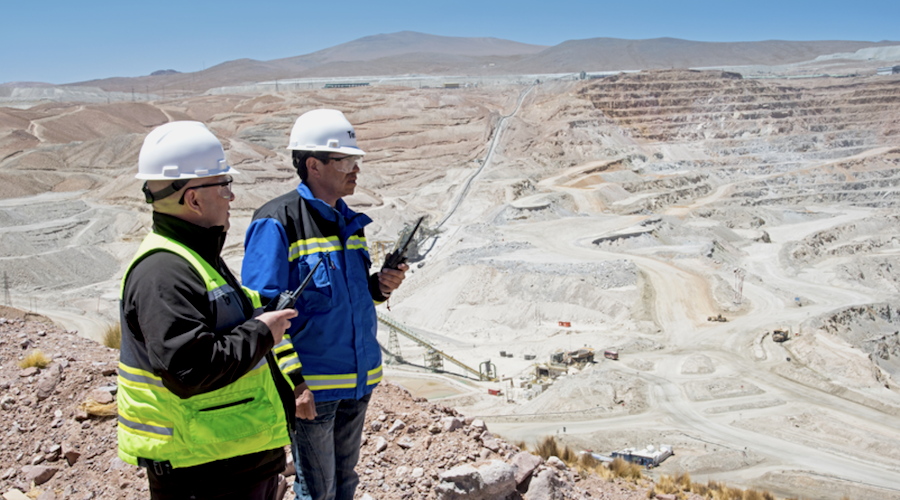Identify Key Alteration Minerals. Access the USGS Spectral Library from a SPECTRAL EVOLUTION Field Spectrometer.

Lawrence, MA – March 18, 2013 – UV-VIS-NIR spectroscopy is an increasingly popular tool for identifying key alteration minerals in economic geology. By measuring absorption rates in the 350-2500nm spectral range, many minerals present a distinct response and can be identified. For example, Indicator minerals such as pyrophyllite, alunite, and dickite are useful in studying alterations associated with epithermal gold. Garnets, diopside, and olivine are indicator minerals for kimberlites and diamonds. Muscovite, ilite, and chlorite can be indicators of porphyry copper. The availability of a reference spectra database is a key ingredient in successfully identifying indicator minerals.
The USGS Spectral Library is a digital reflectance spectral library that covers the wavelength range from the ultraviolet to the far infrared. Now you can access this library from the DARWin SP Data Acquisition software on a PSM-3500, SM-3500 or specTERRA field portable spectrometers. Scan your sample, then compare it to the library for faster mineral identification.
All SPECTRAL EVOLUTION field spectrometers for mining include DARWin SP Data Acquisition software that allows for the rapid collection of target spectra with a single click, offers a range of plotting options, and can overlay multiple scans for quick identification and comparison. DARWin SP includes pull-down menus for instant access to the USGS Spectral Library.
The user selects the library from the Darwin SP menu and sees a sample of interest. The right half of the window will display the reflectance spectra for the sample and link to a descriptive web page that may also include sample photographs. By comparing the USGS sample versus the sample collected in the field, fast and accurate mineral identification is possible. The types of minerals in the USGS library include:
- Amphiboles
- Arsenates
- Carbonates
- Clays
- Epidote
- Hydroxides
- Micas
- Phosphates
- Phyllosilicates
- Silicates
- Sulfates
- Zeolites
The PSM-3500, SM-3500, and specTERRA are ideal for field work. Lightweight, with no moving optics, they provide reliable scanning. Fast scanning is delivered across the full spectral range from 350-2500nm with autoshutter, autoexposure, and auto-dark correction for extremely fast scanning. The DARWin SP software produces ASCII compatible files for use with 3rd party analysis software without the need for post-processing.
Using our mineral contact probe or benchtop reflectance probe, the user can enjoy one-touch operation in applications that include:
- Outcrop analysis
- Pit bench mapping
- Core logging
- Vector mineralization
- Hand sample, RC chip, and blast hole analysis
- Powder analysis
- Soil grid collection
For more information on SPECTRAL EVOLUTION spectrometers, software and libraries for mining, please visit: http://spectralevolution.com/spectrometers_mining.html
{{ commodity.name }}
{{ post.title }}
{{ post.date }}

Comments